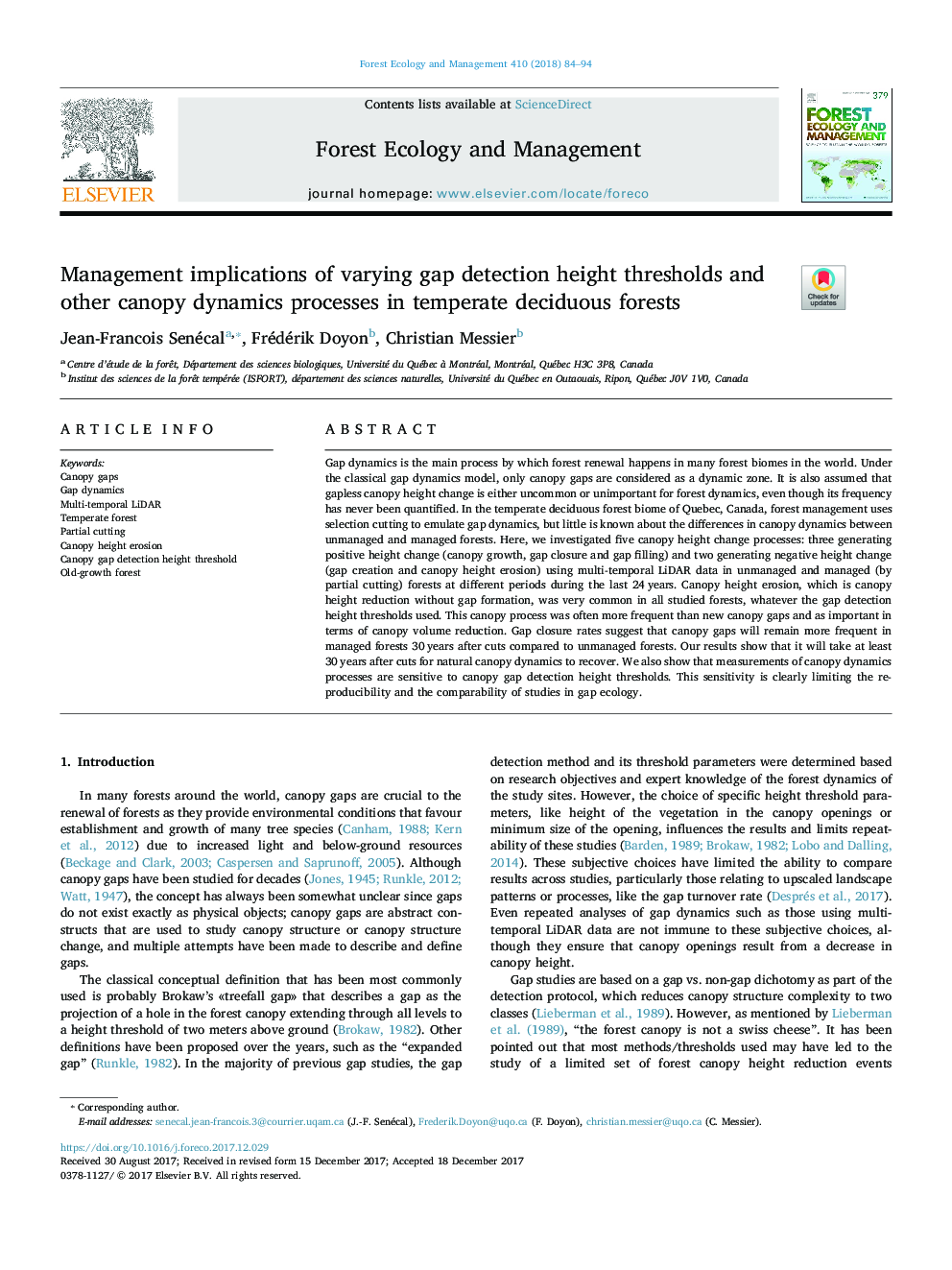| Article ID | Journal | Published Year | Pages | File Type |
|---|---|---|---|---|
| 6541853 | Forest Ecology and Management | 2018 | 11 Pages |
Abstract
Gap dynamics is the main process by which forest renewal happens in many forest biomes in the world. Under the classical gap dynamics model, only canopy gaps are considered as a dynamic zone. It is also assumed that gapless canopy height change is either uncommon or unimportant for forest dynamics, even though its frequency has never been quantified. In the temperate deciduous forest biome of Quebec, Canada, forest management uses selection cutting to emulate gap dynamics, but little is known about the differences in canopy dynamics between unmanaged and managed forests. Here, we investigated five canopy height change processes: three generating positive height change (canopy growth, gap closure and gap filling) and two generating negative height change (gap creation and canopy height erosion) using multi-temporal LiDAR data in unmanaged and managed (by partial cutting) forests at different periods during the last 24â¯years. Canopy height erosion, which is canopy height reduction without gap formation, was very common in all studied forests, whatever the gap detection height thresholds used. This canopy process was often more frequent than new canopy gaps and as important in terms of canopy volume reduction. Gap closure rates suggest that canopy gaps will remain more frequent in managed forests 30â¯years after cuts compared to unmanaged forests. Our results show that it will take at least 30â¯years after cuts for natural canopy dynamics to recover. We also show that measurements of canopy dynamics processes are sensitive to canopy gap detection height thresholds. This sensitivity is clearly limiting the reproducibility and the comparability of studies in gap ecology.
Related Topics
Life Sciences
Agricultural and Biological Sciences
Ecology, Evolution, Behavior and Systematics
Authors
Jean-Francois Senécal, Frédérik Doyon, Christian Messier,
